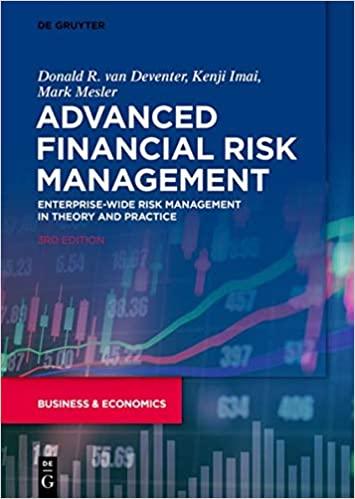
Sep - Calls Last Puts Last Option and Underlying Strike Price Aug Dec Aug Sept Dec 58.51 56 2.76 0.04 0.22 1.16 58.51 56.5 0.06 0.30 58.51 57 1.13 1.74 0.10 0.38 1.27 58.51 57.5 0.75 0.17 0.55 58.51 58 0.71 1.05 0.27 0.89 1.81 58.51 58.5 0.50 0.50 0.99 58.51 59 0.30 0.66 1.21 0.90 1.36 58.51 59.5 0.15 0.40 2.32 58.51 60 0.31 2.32 2.62 3.30 Each option = 62,500 Swiss francs. The August, September, and December listings are the option maturities or expiration dates. 1.28 1. Plot the last sale price of August call and put options as a function of the exercise price. The Exercise price should be on the x-axis. Explain the pattern of the put and call prices as a function of the exercise price. 2. Compute the intrinsic value and time premium for each August option. Also compute the time premium as a percentage of the exchange rate (1.e., the spot price of 58.51). Plot the time premiums of call and put options as a function of the exercise price. Explain the patterns. 3. Using the August options, construct the series of potential Call butterfly spreads that are possible based on strike prices that are exactly 0.5 apart. Hint: A butterfly spread involves positions in options with three different strike prices. It can be created by buying a European call option with a relatively low strike price K1, buying a European call option with a relatively high strike price K3, and selling two European call options with a strike price K2 that is halfway between K1 and K3. > A butterfly spread leads to a profit if the exchange rate stays close to K2, but gives rise to a small loss if there is a significant price move in either direction. Thus, a butterfly spread is an appropriate strategy for an investor who feels that large exchange rate moves are unlikely. The strategy requires a small investment initially. i. Compute the break-even points (i.e. the upside and downside break-even points) for each potential August call butterfly spread. ii. For each potential August call butterfly spread, what would be the percentage increase and decrease in the exchange rate required to break even? For each potential August call butterfly spread, draw a contingency graph that shows the spread profits. 111. Sep - Calls Last Puts Last Option and Underlying Strike Price Aug Dec Aug Sept Dec 58.51 56 2.76 0.04 0.22 1.16 58.51 56.5 0.06 0.30 58.51 57 1.13 1.74 0.10 0.38 1.27 58.51 57.5 0.75 0.17 0.55 58.51 58 0.71 1.05 0.27 0.89 1.81 58.51 58.5 0.50 0.50 0.99 58.51 59 0.30 0.66 1.21 0.90 1.36 58.51 59.5 0.15 0.40 2.32 58.51 60 0.31 2.32 2.62 3.30 Each option = 62,500 Swiss francs. The August, September, and December listings are the option maturities or expiration dates. 1.28 1. Plot the last sale price of August call and put options as a function of the exercise price. The Exercise price should be on the x-axis. Explain the pattern of the put and call prices as a function of the exercise price. 2. Compute the intrinsic value and time premium for each August option. Also compute the time premium as a percentage of the exchange rate (1.e., the spot price of 58.51). Plot the time premiums of call and put options as a function of the exercise price. Explain the patterns. 3. Using the August options, construct the series of potential Call butterfly spreads that are possible based on strike prices that are exactly 0.5 apart. Hint: A butterfly spread involves positions in options with three different strike prices. It can be created by buying a European call option with a relatively low strike price K1, buying a European call option with a relatively high strike price K3, and selling two European call options with a strike price K2 that is halfway between K1 and K3. > A butterfly spread leads to a profit if the exchange rate stays close to K2, but gives rise to a small loss if there is a significant price move in either direction. Thus, a butterfly spread is an appropriate strategy for an investor who feels that large exchange rate moves are unlikely. The strategy requires a small investment initially. i. Compute the break-even points (i.e. the upside and downside break-even points) for each potential August call butterfly spread. ii. For each potential August call butterfly spread, what would be the percentage increase and decrease in the exchange rate required to break even? For each potential August call butterfly spread, draw a contingency graph that shows the spread profits. 111







